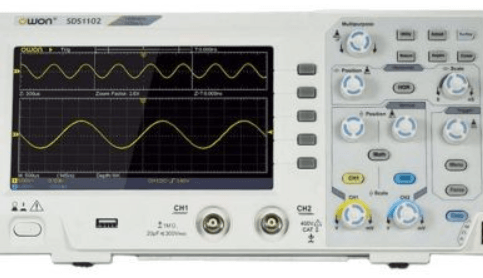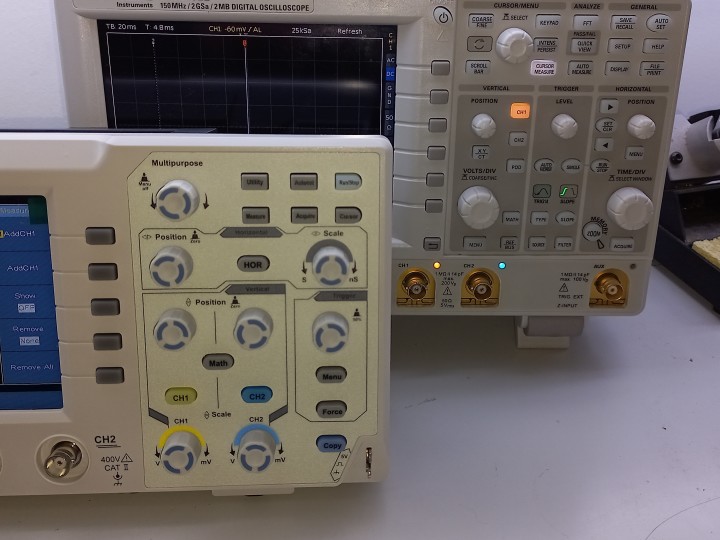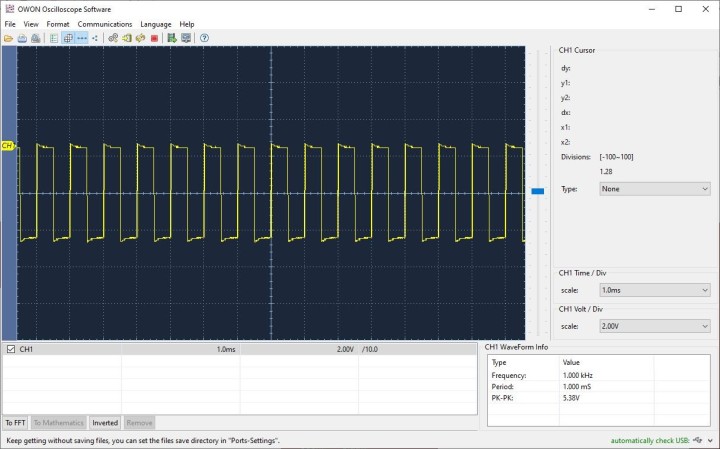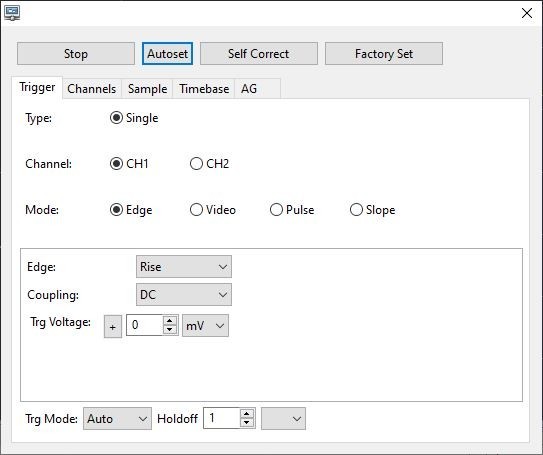The Owon SDS1102 Oscilloscope Offers Simplicity
on

Once again, something nice recently landed on my desk: a two-channel, 100-MHz digital oscilloscope. The Owon SDS1102 has been sold in the Elektor Store for quite some time, and we have reviewed it before. It is a relatively simple oscilloscope, especially compared to the Hameg HMO1522 that normally is on my lab table (see Figure 1), but that is a device from a completely different price range. This Owon is seen as an oscilloscope for beginners, a classification I do not entirely agree with. The low price certainly contributes to that image, and in terms of specifications and accuracy, my Hameg will perform much better. But that doesn’t mean I wouldn’t like the Owon SDS1102, on the contrary. Let me share my impressions with you.

Ergonomics
The first things that struck me about this oscilloscope were its light weight and its relatively small size. Of course, it is nice when a measuring instrument is light and takes up little space on the lab table, but this does not always benefit the user friendliness. For example, nothing is as irritating as a measuring instrument that is too lightweight to stay in place when you operate buttons to adjust settings or ranges. But once on the lab table for the first measurements, you will find that ergonomically there is nothing wrong with this Owon SDS1102: even when placed on a smooth work surface, it is easy to operate.
My remark about the oscilloscope’s small dimensions refers mainly to its depth. The front panel is not much different in size than a classic scope from the CRT era, the control panel is spacious and clear, and the buttons work comfortably. The simplicity and clarity of the control panel is a plus for me. The most essential buttons for the settings are quickly found. The LCD screen is large, bright and clear, and there is nothing to complain about in terms of viewing angle.
The User Interface
Unfortunately, the user interface is not well thought out in all respects, as some — less frequently used — settings and functions are hidden in menus or under buttons where you would not immediately expect them to be. It is very irritating that menus close automatically after a relatively short time out if you do not operate any buttons, but fortunately, this can be adjusted or even completely switched off in the settings.
The button Measure opens a menu where the user can add automatic measurements of the input signals to the display. On my Hameg, the list is limited to the most obvious measurements, such as period time or RMS value of the input signal. But on the Owon, a very long list appears. A far too long list for my taste, where you will often have to consult the manual to understand exactly what is being measured.
SDS1102 USB Connectors
On the front panel is also the usual USB-A connector to plug in a memory stick. Screen dumps and measured values can easily be saved for further processing on a computer. This connection is also used in case of a possible firmware update, but I could not find any downloads with (newer) firmware for the SDS1102 on Owon’s website.
A second USB port (type B) is located on the back of the oscilloscope. With a USB cable, this connection can be linked to a PC. The supplied CD contains software to send measurements from the oscilloscope to the computer (Figure 2).

Moreover, the SDS1102 can be controlled remotely with this software (Figure 3). I don’t have a direct application for this, but it might come in handy.

Current Measurement
In the channel settings I noticed — besides the possibility to choose a 1:100 or even a 1:1000 probe — a setting for current measurement, which I have not seen before on a scope. Simply put, a channel measures the voltage across a resistor whose value you enter in the settings of the oscilloscope. The voltage the probe measures is automatically converted to the current flowing through the resistor. Sounds handy, but in practice, you will need to have a differential probe, unless this resistor is connected to GND at one end. Maybe you can even use the scope’s internal functions to convert the voltage difference between the two channels into a current, but after a first failed attempt, I didn’t look any further. In my opinion, the manual that comes with the SDS1102 should be more helpful on this feature.
Manuals
Speaking of the manual, this Owon scope comes with a printed Quick Guide that — as the name suggests — gets the user started with connecting, calibrating, and performing the most basic measurements. The accompanying CD contains the much more comprehensive User Manual, which covers the SDS1102 in more detail. It also contains clear examples that show how to measure with this oscilloscope. It is not high-quality teaching material, but it certainly contains useful instructions and tips for the novice oscilloscope user. And, as I already mentioned, even seasoned technicians will need to refer to this manual from time to time to fully understand all functions and operation.
SDS1102 Simplicity
In most reviews on the Internet, the SDS1102 is seen as a cheap oscilloscope for beginners, and admittedly, in terms of specifications and features, it is certainly not a top-of-the-line instrument, which you should not expect from a device in this price range. There are certainly some criticisms, but I really like the simplicity and clarity of the operation. Finally, an oscilloscope where you can quickly find simple settings like time base and trigger settings at a glance. That's a good reason to buy this oscilloscope!


Discussion (2 comments)